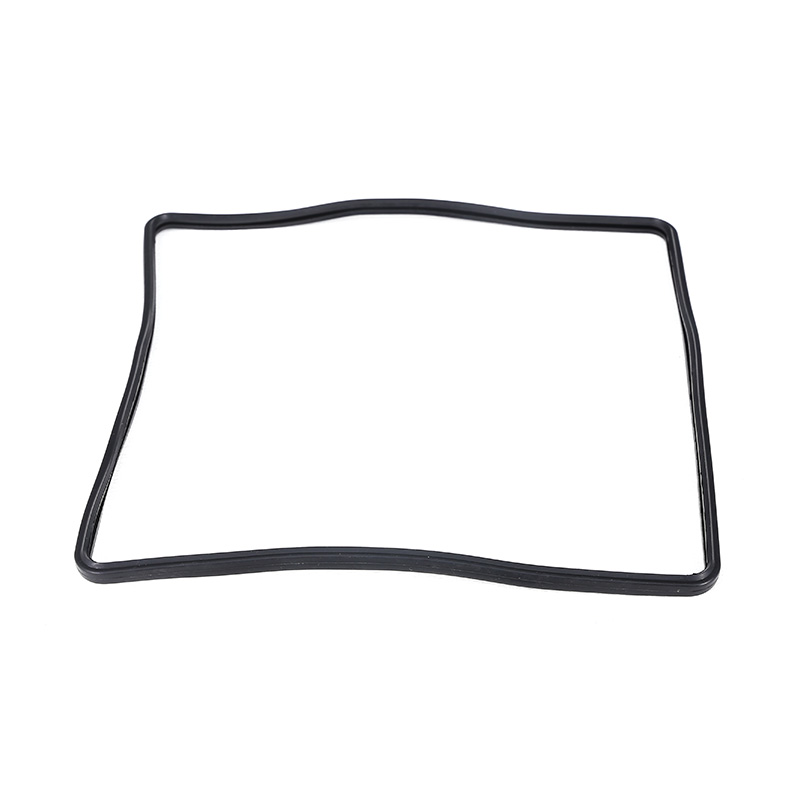+86-576-88024290
Search
02 05, 2025
Industry Updates
In the realm of industrial engineering, the demand for sealing solutions that withstand environments has never been higher. Among the innovations driving this sector forward, special shape seal rings have emerged as a game-changer, particularly due to their self-lubricating properties. These advanced components are redefining reliability in applications involving high temperatures, rapid motion, and prolonged operational stress. By integrating unique geometries with self-lubricating materials, special shape seal rings address critical challenges in sealing technology while minimizing maintenance and efficiency.
The Science Behind Self-Lubrication in Seal Design
Self-lubrication is a property that allows materials to reduce friction without external lubricants. For special shape seal rings, this characteristic is achieved through the strategic use of polymers, composites, or engineered ceramics embedded with solid lubricants like graphite, PTFE, or molybdenum disulfide. When exposed to friction, these materials release microscopic lubricating particles, forming a protective layer between moving surfaces. This mechanism is especially vital in high-temperature or high-speed scenarios, where traditional lubricants degrade or evaporate.
The design of special shape seal rings amplifies this advantage. Unlike conventional circular seals, their asymmetrical or custom-engineered profiles—such as X-rings, U-cups, or stepped geometries—ensure contact pressure distribution. This reduces localized wear and heat generation, further enhancing the effectiveness of self-lubrication. For instance, in rotary systems operating at speeds exceeding 10,000 RPM, special shape seal rings maintain seal integrity by balancing friction reduction with structural stability.
Engineering Breakthroughs in Material and Geometry
The evolution of special shape seal rings is rooted in advancements in material science and precision manufacturing. Modern composites blend thermoplastics with reinforcing fibers (e.g., carbon or aramid) to improve tensile strength while retaining self-lubricating capabilities. Simultaneously, additive manufacturing enables the production of intricate geometries that were previously unachievable. These geometries—such as multi-lip designs or wave-like surface patterns—enhance sealing performance by adapting dynamically to thermal expansion or shaft misalignment.
In high-temperature environments, such as aerospace engines or industrial turbines, special shape seal rings excel where traditional seals fail. Materials like PEEK (polyether ether ketone) or PI (polyimide) withstand temperatures above 300°C while maintaining low friction coefficients. The self-lubricating nature of these polymers ensures continuous operation without the risk of lubricant depletion, a common issue in heat.

Applications Across Industries
The versatility of special shape seal rings has led to their adoption across diverse sectors. In the automotive industry, they are critical in turbochargers, transmission systems, and electric vehicle (EV) battery cooling units. For example, EV manufacturers leverage the self-lubricating properties of special shape seal rings to seal high-speed coolant pumps, preventing leaks while resisting chemical degradation from coolants.
In energy production, special shape seal rings play a pivotal role in wind turbines and hydraulic fracturing equipment. Wind turbine gearboxes, subjected to constant rotational stress and temperature fluctuations, rely on these seals to minimize downtime. Similarly, in oil and gas applications, special shape seal rings withstand abrasive fluids and high-pressure conditions, ensuring leak-free performance in subsea valves or drilling tools.
The aerospace sector benefits equally. Jet engine components demand seals that endure temperatures and rotational speeds. Special shape seal rings made from advanced polyimides or ceramic composites meet these requirements, reducing weight compared to metal seals while offering wear resistance.
Overcoming Challenges Through Innovation
Despite their advantages, designing special shape seal rings for self-lubrication presents challenges. Material selection must balance lubrication efficiency with mechanical strength. For instance, adding too much solid lubricant can weaken the seal’s structural integrity, while insufficient lubrication leads to premature wear. Computational modeling and real-world testing are essential to optimize this balance.
Another consideration is compatibility with operational environments. Special shape seal rings used in chemical processing plants must resist aggressive media while retaining their self-lubricating properties. Solutions include coatings like DLC (diamond-like carbon) or hybrid materials that combine chemical inertness with low friction.
The Future of Self-Lubricating Seals
As industries push toward higher efficiency and sustainability, the role of special shape seal rings will expand. Researchers are exploring bio-based polymers and nano-enhanced composites to improve self-lubrication further. For example, graphene-infused seals could offer unparalleled thermal conductivity and wear resistance.
Moreover, the integration of smart sensors into special shape seal rings is an emerging trend. Embedded sensors could monitor wear levels, temperature, and lubrication status in real time, enabling predictive maintenance and reducing unplanned downtime.
Special shape seal rings represent a fusion of innovative design and material science, offering unmatched performance in demanding applications. Their self-lubricating properties eliminate dependency on external lubricants, reduce energy loss from friction, and extend service life—critical factors for industries prioritizing efficiency and reliability. As technology evolves, these seals will continue to set new benchmarks, solidifying their status as indispensable components in modern engineering. From aerospace to renewable energy, special shape seal rings are not just sealing gaps; they are bridging the gap between current capabilities and future possibilities.